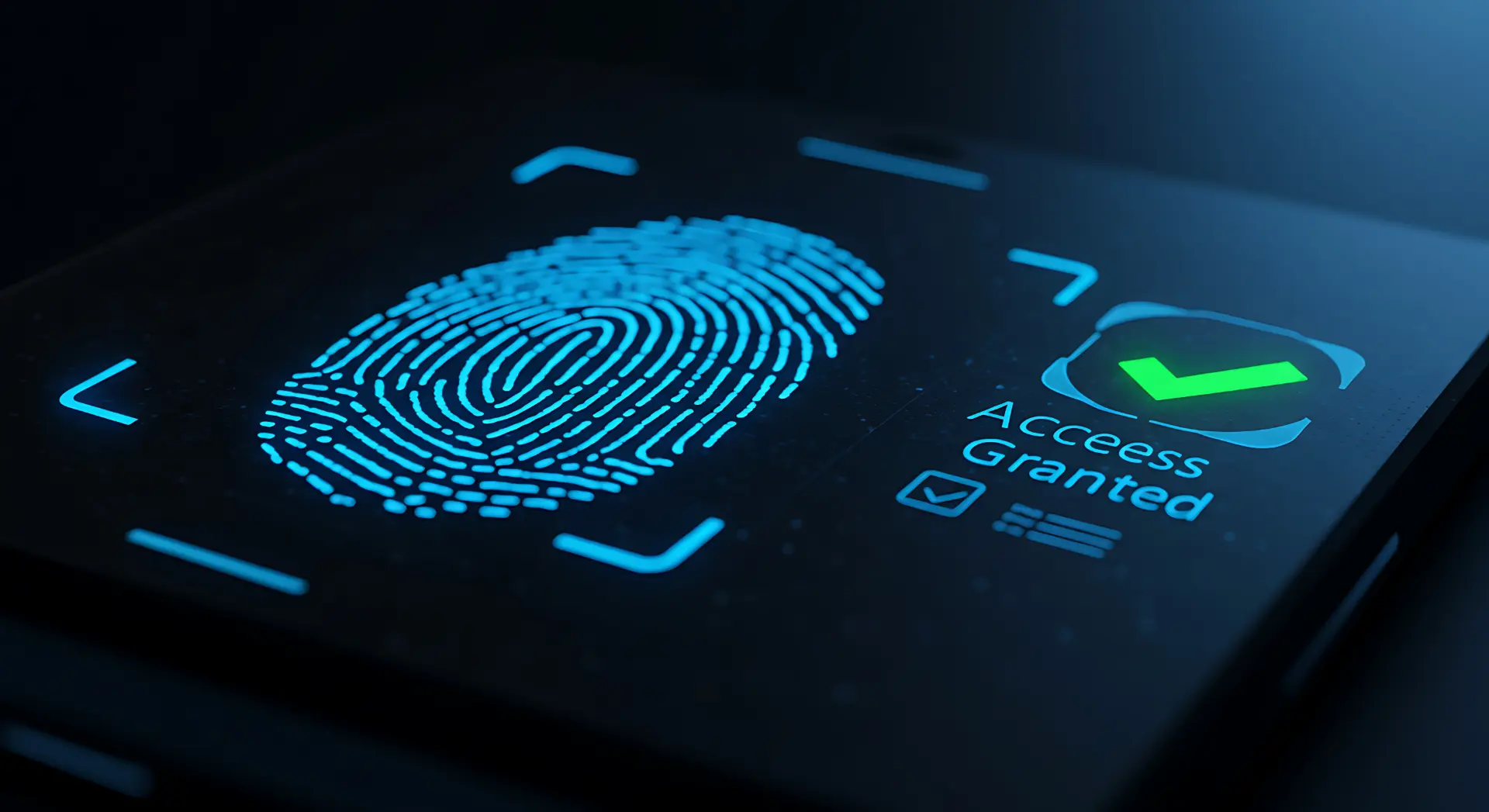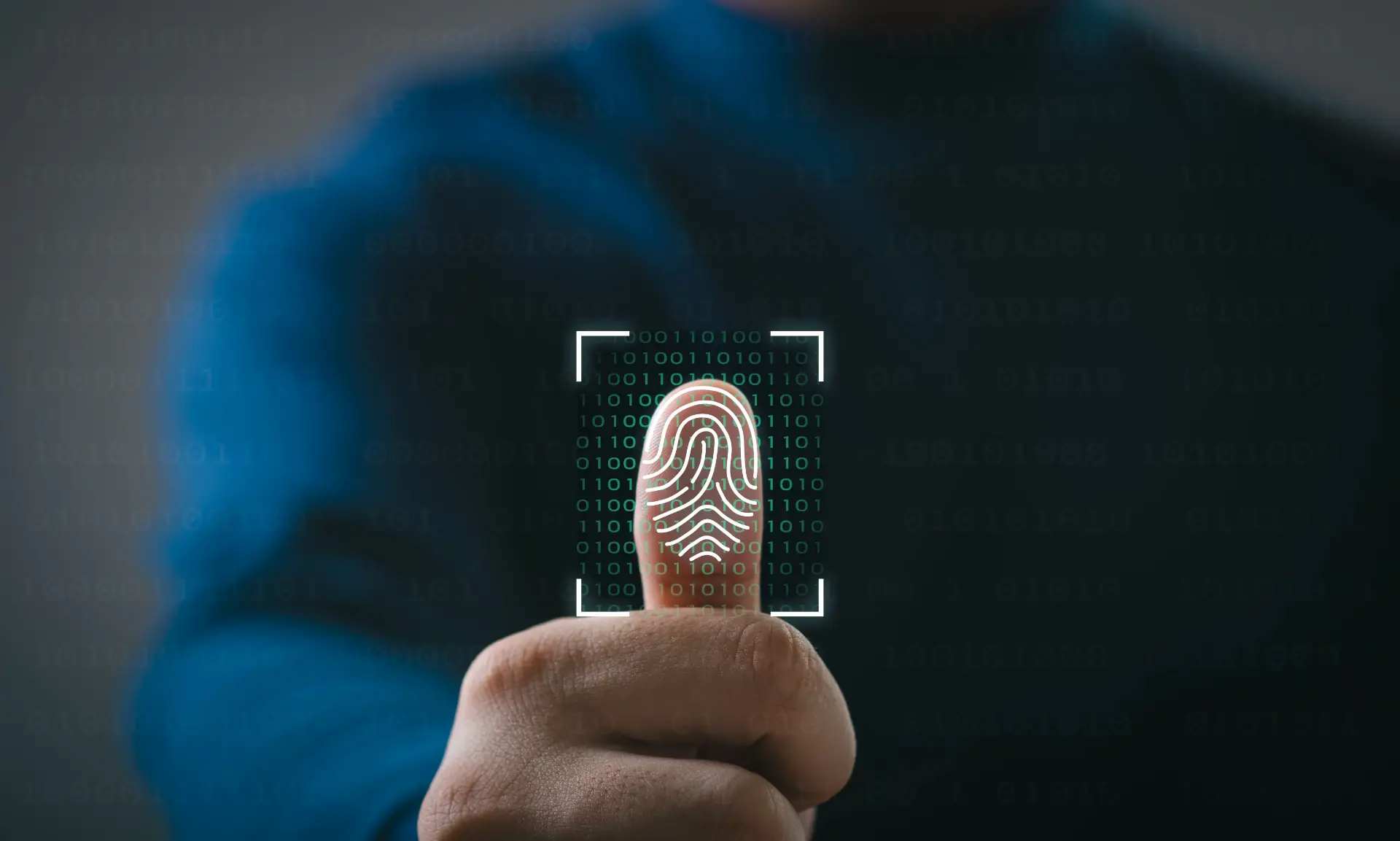Table of contents
- What is biometric authentication?
- The meaning of biometric authentication
- How a biometric authentication system works
- Biometric technologies: overview
- Biometric authentication and mobile devices
- Safety and criticality
- The future of biometric authentication
Biometric systems are establishing themselves as cutting-edge solutions. Biometric authentication offers a high level of security by relying on unique biological characteristics to verify the identity of users.
But what does biometric authentication mean , how does it really work and what implications does it have for privacy and the protection of sensitive data?
In this article we will delve into what a biometric authentication system is , what biometric technologies are used, how they work and in which areas they are applied.
We will also analyze the advantages, critical issues and future of this technology, increasingly present in mobile devices , banking systems, healthcare systems and corporate cyber security .
What is biometric authentication?
The term biometric authentication indicates a process through which a computer system confirms the identity of a user based on one or more biometric characteristics , that is, unique and measurable elements of the human body or individual behavior.
Answering the question ” what is biometric authentication “, we can say that it is a recognition method that is not based on passwords, PINs or tokens, but on the biological or behavioral uniqueness of the user.
Common biometric characteristics:
- Fingerprint
- Facial recognition
- Voice recognition
- Hand geometry
- Iris or retina
- Vein Pattern
- Keystroke dynamics
- Gait
Each biometric characteristic is by definition individual and difficult to replicate, which makes biometric systems extremely effective for verifying identity .
The meaning of biometric authentication
When wondering about ” biometric authentication meaning “, it is important to highlight that it represents a verification process that allows a system to grant access only if the biometric data provided by the user corresponds to that stored.
So what is biometric authentication? It is a system that compares the input data with a pre-existing model, using sophisticated mathematical algorithms.
Practical example: facial recognition
Suppose a smartphone equipped with a facial recognition system wants to unlock the screen. The system acquires a three-dimensional map of the user’s face and compares it with the saved one.
If the biometric characteristic matches, the device unlocks. This happens in milliseconds thanks to machine learning algorithms and the presence of high-precision sensors.
How a biometric authentication system works
A biometric authentication system is composed of several phases:
- Biometric data acquisition
Through dedicated sensors (fingerprint scanners, microphones, IR cameras). - Processing and normalization
The collected data is digitized, cleaned and converted into a comparable format. - Feature extraction
Relevant information (e.g. fingerprint minutiae) is isolated. - Comparison with registered model
The data is compared with the one saved at the time of registration. - Authentication Decision
The system checks the match within a certain margin of error.
An example of simplified code (Python pseudocode) to explain biometric matching:
def compare_biometric_data(user_data, registered_data):
threshold = 0.95 # required accuracy
similarity = calculate_similarity(user_data, registered_data)
return similarity >= thresholdThe returned value determines whether the system will grant access.

Biometric technologies: overview
Biometric technologies are divided into two main categories:
Physiological biometrics
It is based on permanent biological characteristics , such as:
- Fingerprints
- Face
- Retina
- Iris
- DNA
Behavioral Biometrics
It is based on dynamic user patterns, including:
- Voice
- Signature
- Gait
- Typing on keyboard
Each biometric can be chosen based on the environment, the sensitivity of the data processed and the need for greater security.
Example
Banking systems can use facial recognition in combination with voice recognition for highly critical operations.
Biometric authentication and mobile devices
The advent of biometric smartphones has revolutionized the concept of secure access. Their devices now integrate sensors for fingerprints , facial recognition and, in some cases, voice recognition.
Case study: Apple Face ID
Apple introduced Face ID with the iPhone X, a system that uses an infrared map of the face, projected by a dot projector.
This allows the system to recognize the user’s face even in the dark, and to adapt to changes over time (e.g. beard growth). The system works locally and the data is never sent to Apple servers, a key measure for the protection of sensitive data.
Safety and criticality
Biometric authentication is one of the most advanced solutions to secure access, but it is not without risks. The main challenges include:
1. Cloning or falsification
Unsophisticated systems can be fooled with printed images, 3D models, or voice recordings. This is why security measures such as liveness detection are crucial .
2. Biometric data theft
Biometric data is sensitive data par excellence as it concerns physiological characteristics of the subjects. If compromised, it cannot be changed like a password. This makes encryption and local storage necessary.
3. Identification errors
A biometric system can incur two types of errors:
- FAR (False Acceptance Rate): Access granted to those who should not have it.
- FRR (False Rejection Rate): Access denied to legitimate user.
The future of biometric authentication
The trend is towards multimodal authentication , which combines multiple biometrics that can be used simultaneously to reduce error margins and increase security.
Example:
A banking app may require the following as a biometric recognition system :
- Fingerprint
- Voice recognition
- Numeric PIN
This type of approach, also called biometric MFA (Multi-Factor Authentication), increases security and makes unauthorized access almost impossible.
To conclude
Biometric authentication represents one of the most promising frontiers of modern cyber security . Although not a risk-free solution, biometric systems are progressively replacing traditional access methods thanks to a high level of security and ease of use.
Integration with artificial intelligence , improved sensors and new regulations on the protection of sensitive data are helping to make it increasingly reliable and widespread.
Questions and answers
- What does biometric authentication mean?
It is a process that uses unique biological or behavioral characteristics to confirm a user’s identity. - What are the most used biometric features?
The most common are fingerprint, facial recognition, voice recognition and iris recognition. - Is biometric authentication secure?
Yes, but it must be accompanied by measures such as encryption and liveness detection. - Can biometric data be stolen?
Yes, and for this reason they are considered extremely sensitive data to be protected. - Where is biometric authentication used?
In smartphones, banking systems, businesses, hospitals, airports and governments. - What is the difference between physiological and behavioral biometrics?
The first analyses physical aspects, the second repetitive behaviours such as voice or gait. - Can a biometric system make mistakes?
Yes, with false positives (FAR) or false negatives (FRR), but modern technologies reduce these errors. - Is it possible to fake a fingerprint?
With sophisticated tools, yes, but advanced systems use vitality detection to avoid this. - Does biometric authentication violate privacy?
Only if poorly managed. If the data is stored locally and encrypted, the risk is minimal. - Which mobile devices use facial recognition?
Apple, Samsung, Huawei and other brands integrate this technology into their high-end smartphones.
